Review: Pantech Breeze IV for AT&T
Dec 23, 2013, 3:15 PM by Eric M. Zeman
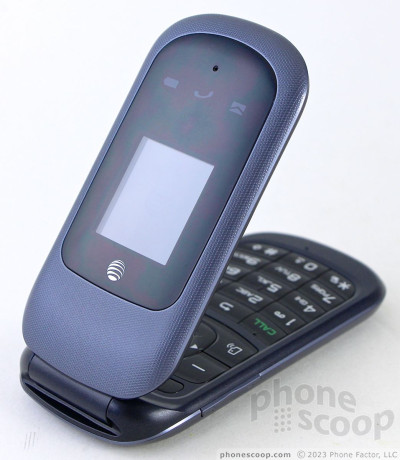
Pantech's latest for AT&T is an entry-level flip phone that covers the basics.
Form
Is It Your Type
The Pantech Breeze IV is the anti-smartphone. Billed as the next-generation flip phone, it's a clamshell that harkens back to a simpler age when phones weren't meant to do much more than make phone calls. If you're looking for a simple voice device that has a few nice extras tossed in, the Breeze IV is a good place to start.
Body
The Pantech Breeze IV is a compact clamshell that is easy to hold and use, and works fairly well. Phone makers have a little more leeway when it comes to designing flip phones than they do modern smartphones, but Pantech didn't go out of its way with the Breeze IV. It's handsome, but not sexy.
The outer surfaces are a slate blue and the inner surfaces are all black. They are matched well and offset one another nicely. The blue surfaces are patterned, but still feel a bit slippery. There are no grippy or soft-touch surfaces. The outer display and camera module are each set in their own black frames on the front and back of the B4, respectively. I like the oval-esque shapes, which match that of the phone itself.
The B4 is small. I am able to wrap my hand around it with ease. The surfaces are all rounded and it sits deep in your palm thanks to the narrow profile. Flip phones can often be thick when shut, but the B4 isn't. It is perfectly comfortable in your hand or pocket. The materials are plastics and their quality leans towards feeling cheap. The phone is tightly pieced together, though, and the weight of the phone is quite nice.
The front face (when closed) includes the outer display and three alert symbols below the display. These symbols blink when you've got unread messages, missed calls or voicemails, and low battery life. I first thought they were buttons, but they are not. They will continue to blink until you open the phone and acknowledge the message, etc. The outer display itself will show you the time and date, but not your signal strength and battery meter, which is kind of weird.
The volume toggle is on the left edge of the phone. It's rather small, but has a nice shape and is easy enough to find. I liked the travel and feedback. The B4 charges via micro-USB, which is on the right edge of the phone. There is no standard headphone jack.
The hinge on our review unit is a bit sticky. It has a spring inside, but I often had to push the top half all the way open rather than let the spring assist me. The spring worked fine for closing the B4. The inside of the top half is dominated by a huge three-inch screen. It's among the bigger screens we've seen on a flip phone. It's nice to have. The phone balances well in the hand when open, I was able to reach all the controls without losing my grip on the phone.
The bottom half is plastered with buttons. From top to bottom, there are three user-definable shortcut buttons; the d-pad, soft keys, and other dedicated buttons; and the numerical dialpad. The three emergency shortcuts are glossy and rather flat. Little defines them, but their positioning makes it hard to press the wrong one. Travel and feedback isn't that good, though. The d-pad has the directional controller in the middle and four buttons in the corners: soft keys at 11 and 2 o'clock, and voice-action and camera buttons at 8 and 4 o'clock. The four buttons each have excellent travel and feedback, but the d-pad does not. There are little nubs sticking up on the d-pad to help you tell where your thumb is, but I didn't find them comfortable or all that helpful.
There's a thin strip of plastic separating the d-pad controls and the dialpad from one another. The call, back, and end buttons form the top row of the dialpad itself. The number buttons all have a nice, rounded shape that makes telling them apart easy. Travel and feedback is decent, but could be better. The buttons could be a little bit larger, too.
The B4 has a memory card slot, but you have to remove the battery cover to access it. In fact, you have to remove the battery, too, which is a bummer.
Performance
Screen
The B4's external screen is small and not very pixel-rich. It's easy to read when indoors, but darned near impossible to read outdoors under the sun. It doesn't help that fingerprints and grime can obscure the little screen.
The internal display measures three inches across the diagonal and has 400 x 240 pixels. This is a fantastic size and resolution for a $40 flip phone. You can see individual pixels quite easily, but it still looks quite good. The LCD panel is plenty bright for indoor and outdoor use, and most elements and graphics on the screen look sharp enough.
Signal
The B4 did OK with AT&T's network, but I've seen better. It performed slightly under par when compared to other devices tested throughout the greater New York City region. It never had any trouble connecting calls, but it dropped them quite regularly. Data speeds, which are limited to a max of 3.6 Mbps, are pokey at best no matter how strong or weak the signal strength.
Sound
Phone calls sounded mediocre through the Breeze IV. The earpiece produced clean calls with decent volume. I think the earpiece should be much louder, though, especially for a device that might be used by seniors. The quality was just OK, and people I spoke to through the Breeze IV said I sounded scratchy. The speakerphone is far too quiet, and the quality drops a bit. It's all too easy to cover the speaker with your finger when holding the B4. You'll get the best results if you put it on a flat, hard surface, such as a table, desk, or countertop. Even then, however, it could be louder. Conversely, ringers and alert tones are excessively loud. You can get by setting them at 50% most of the time. The vibrate alert was all right, but not great.
Battery
For a flip phone, battery life could be much, much better. The large screen must really eat up the battery. The B4 has a rated talk time of just three hours, and that is accurate. If you regularly take pictures, play games, or do anything that keeps the screen on, the B4 might not make it through an entire day. By contrast, other flip phones we've reviewed this year last two or three days. The B4 will remain on standby for about a week, though. Bottom line, it really depends on how you use it. If you use it a lot, expect a day, if you charge it and put it in your purse for emergencies only, you'll be fine for several days.
Basics
Menus
The Breeze IV offers two menu modes: Breeze Mode (heh heh, get it?), and Advanced Mode. Breeze Mode is for either toddlers or seniors. It boils the entire user interface down into a series of short lists. It ditches all the fun graphics and images, and is as plain and simple as it gets. The text is large, the font is blocky, and everything is easy to read and understand.
The Advanced Mode runs like a more standard feature phone operating system. That means the main menu is a grid of 12 icons that are animated and each take you to different functions. You can use the d-pad to navigate through this menu or use dialpad shortcuts. It's quite easy to figure out.
Both modes allow you to adjust the on-screen text to ginormous sizes for those with poor eyesight. Both modes allow you to program the three buttons across the top of the phone to perform a number of tasks. They can be set as calling shortcuts, but also to open the alarm clock, pill reminder, user guide, calculator, notepad, stop watch, and so on.
As far as customization is concerned, the B4 lets you pick between two color themes, set your own wallpaper, set tons of calling behaviors, switch sound profiles, and more.
Calls and Contacts
Flip phones are pretty straightforward when it comes to making calls. Dial the number and press send. Or, create a numeric shortcut on the dialpad. The B4 supports up to 99 of them. Once you actually press send and the call is connected, you can send it to the speakerphone, mute the microphone, or slow the speech down to make it easier to understand. This is a bit weird (for normal folks) and makes it sound like a slow record. For those who are hard of hearing, this could be very helpful. The phone also lets users access the browser, text messages, contact, and notepad apps when in a call.
The contact application is a pain in the arse to set up, but that's because the B4 is a feature phone and not a smartphone. The menu system controlling the address book is plain and straightforward. Actually entering in numbers and names is tedious thanks to the dialpad input. Alternately, the B4 supports AT&T's cloud-based contact service. I'd strongly advise you to backup your existing contacts with AT&T before activating the B4. That way, you can import them automatically when first setting up the phone.
Actual contact cards hold at least four numbers, plus email addresses, street addresses, birthdays, and so on.
Messaging
Messaging is constrained on the B4. Your two options are text messaging and mobile email. The text messaging app, which also supports pictures and video, is bare bones and clunky to work with. There is a lot of navigating and button pushing involved. Thank goodness messages are threaded into conversations. The email option is simple POP3 support for today's email services. There are presets for AIM, Yahoo, Gmail, and others. Email service is not provided free, however. User have to subscribe and pay an extra $5 per month to get it. The email app itself is heavy on lists and really only helpful for reading emails, rather than replying to them. Of course, you *can* reply, it's just a pain in the rear.
There are no social network apps available to the B4, though Facebook and Twitter can be reached through the browser.
Extras
Media
The B4 includes a basic MP3 player app that can be used to play music you've put on a memory card. It actually has a decent set of features, including an equalizer, the ability to shuffle/repeat tracks, as well a sort via artists, playlists, albums, songs, and so on. The B4 also has an AT&T Music app, which is a browser-based shop for purchasing songs, ringtones, and ringback tones. It is painfully slow to interact with, and has a very limited selection of current hits.
Of course, with no headphone jack, you need to use a microUSB adaptor or Bluetooth headphones to listen to music. Thankfully, the B4 supports stereo Bluetooth.
Camera
The camera user interface is spartan and direct. Press the dedicated camera button to open the camera as well as to take pictures. It opens slowly, focuses slowly, and is painfully slow to capture/store images. Taking a picture of your grandchild? Forget it. They'll never sit still long enough. You can turn autofocus off to speed things up, but the difference is imperceptible.
The software allows users to change a fair number of settings, such as the flash (on or off), white balance (auto, daylight, tungsten, fluorescent), effect (sepia, negative, black and white, timer, image size, and shutter/sound effects. I wish it didn't take two steps to open the settings menu, though.
It's basic software that works, but I found it to be clunky.
Photos
The B4's camera rates 3 megapixels. It's not that great. I found it almost impossible to capture images that were in focus, free of grain, and had acceptable exposure. White balance was often accurate, though. Indoor shots are an absolute disaster, and the flash is perhaps the most useless I've ever seen. Fireflies give off more light. Most people who buy feature phones aren't buying them for the camera. That's clearly the case with the B4.
Video
Ditto when it comes to the video. The B4 only captures QVGA-resolution video and it's pretty much worthless. Everything about it looks crummy. It's grainy, lacks focus, and is often under/over exposed.

MPEG-4 format (viewable with QuickTime)
Gallery
The gallery app lets you view photos in a list (with thumbnails) or in a grid. Photos can be sorted into user-created folders, if you wish, and moved freely between the phone's internal memory and that of a memory card. Images can be set as wallpapers, sent via MMS/Bluetooth, renamed, deleted, or copied. There are no editing functions at all.
Browser
The B4 has a simplistic browser. It sticks to mobile web sites and takes its sweet time downloading and rendering them. Browsing the web without a touch screen is torturous, but the browser functions fine once you learn to navigate the controls with the d-pad. It covers the basics, such as allowing you to set your own home screen, protect your privacy, and manage bookmarks.
Bluetooth
The B4's Bluetooth radio functioned well during my tests. I was able to pair it with mono and stereo headphones, as well as my car's hands-free system. Calls via Bluetooth were rather crummy in the quality department, and were not loud enough, either. Music sounded passable when sent to a Bluetooth speaker. The B4 can also connect to other devices to share files, such as photos.
Clock
The external display can be used as a clock. It is dark most of the time when the B4 is closed, but, will light up if you press the volume toggle. It's readable indoors with no trouble, but can be hard to see under a sunny sky. You can pick from a half-dozen different clock faces.
GPS
Believe it or not, the B4 comes with AT&T Navigator. This $10-per-month app lets users plan routes between two points and enjoy voice-guided, turn-by-turn directions. The GPS radio itself is accurate and quite to locate the B4. It's a shame Google Maps or some other, free navigation service isn't available to the phone.
Wrap-Up
The Pantech Breeze IV is a fine little phone, but definitely has some limitations. It's hard to ask for much more from the hardware itself. The B4 is an inexpensive flip phone, which means we can't expect the world. The hardware works well enough for anyone considering a flip phone, though I wish it were easier to get at the memory card slot.
When it comes to actual performance, the Breeze IV is rather weak. Calls aren't loud enough by far, signal performance was mixed, and battery life was disappointing. These are offset by the great screen, and easily customized menus. The software is a cinch to figure out, but doesn't offer much in the way of advanced features. Sure, you can listen to music, surf the web, and take pictures, but none of these are very satisfying as realized on the Breeze IV.
For older people who need an AT&T device that offers adjustable fonts, simpler menus, and the slow speech tool, the Breeze IV may fit the bill. But if voice and battery performance are paramount, this Pantech doesn't cut it.


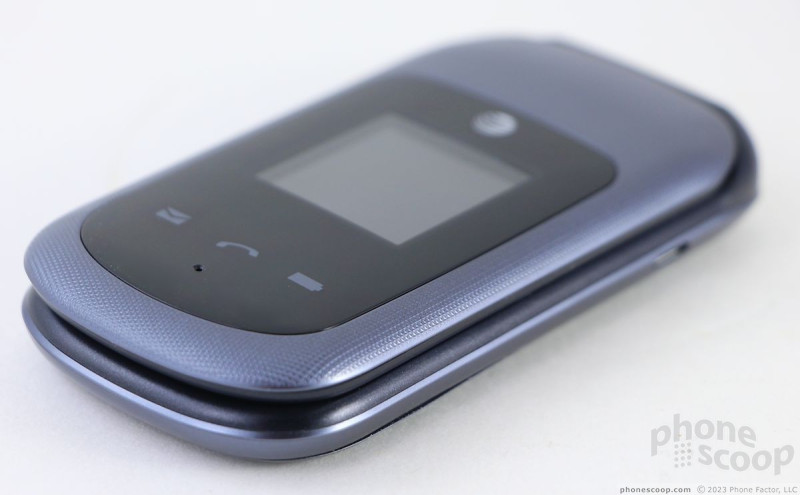


















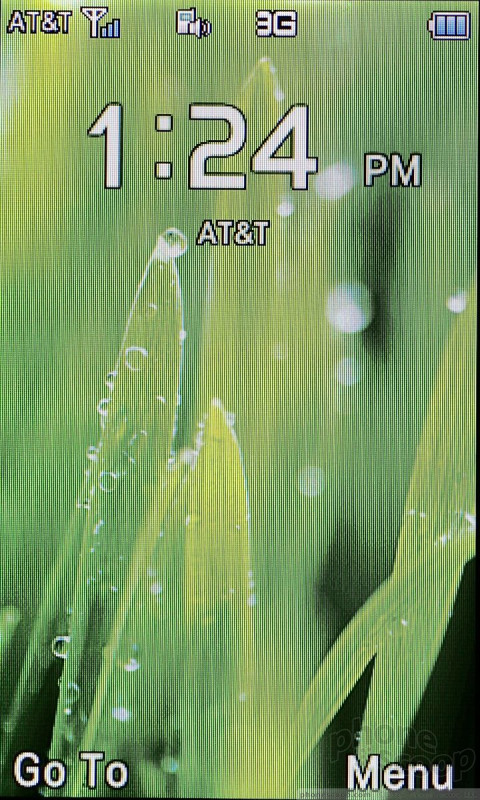






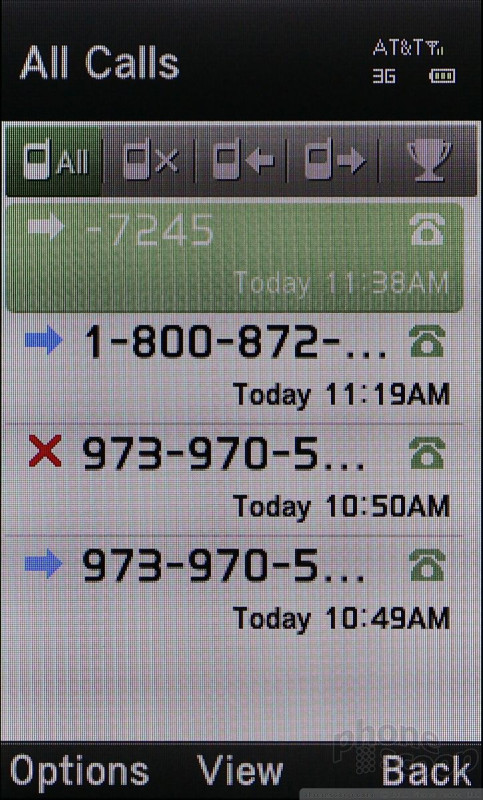




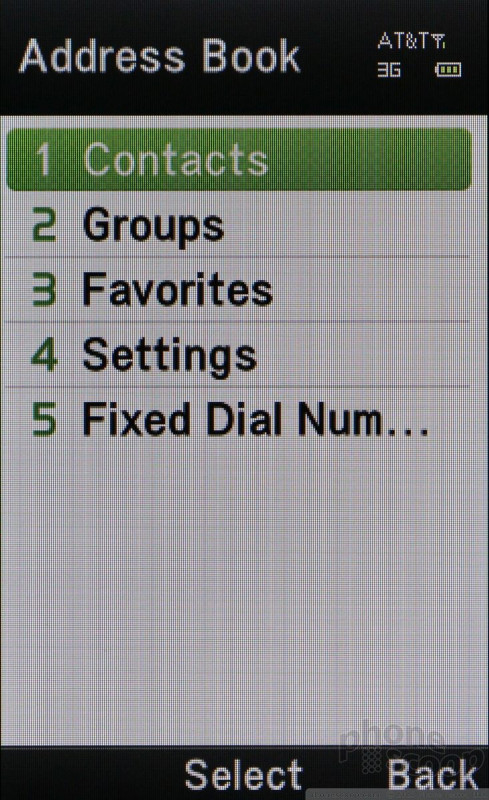



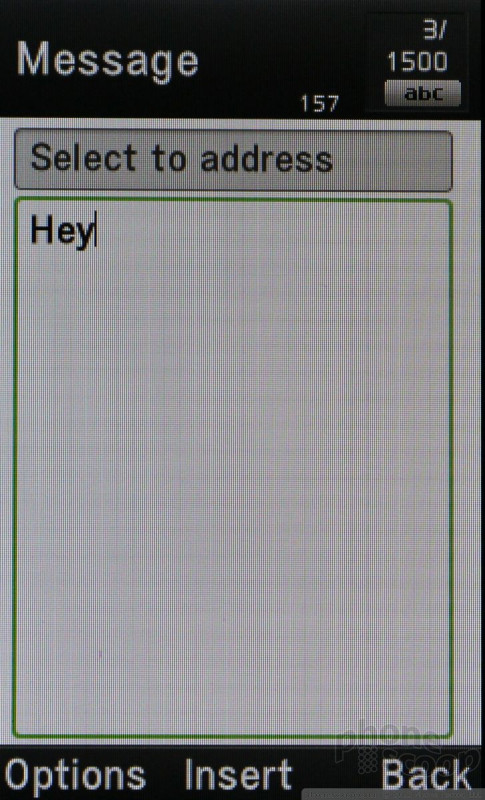



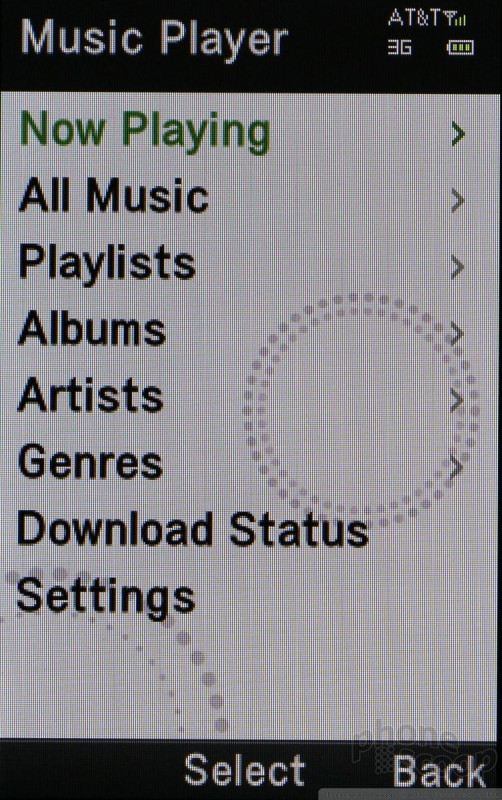




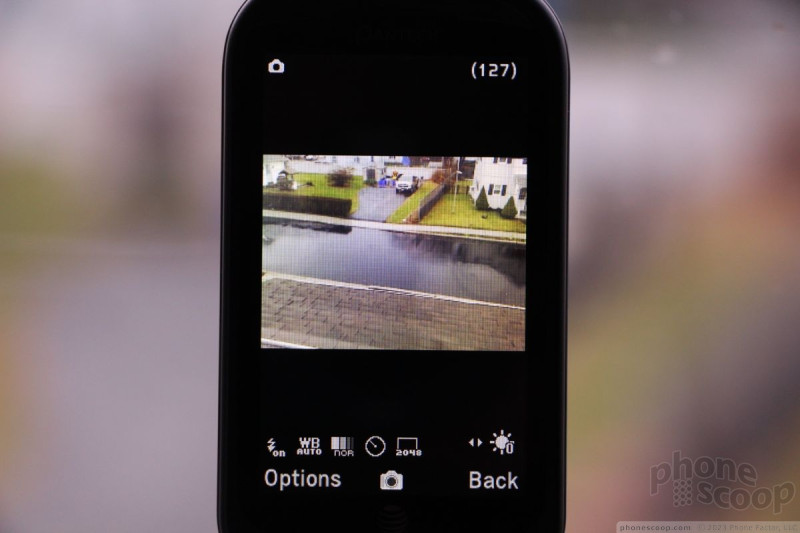














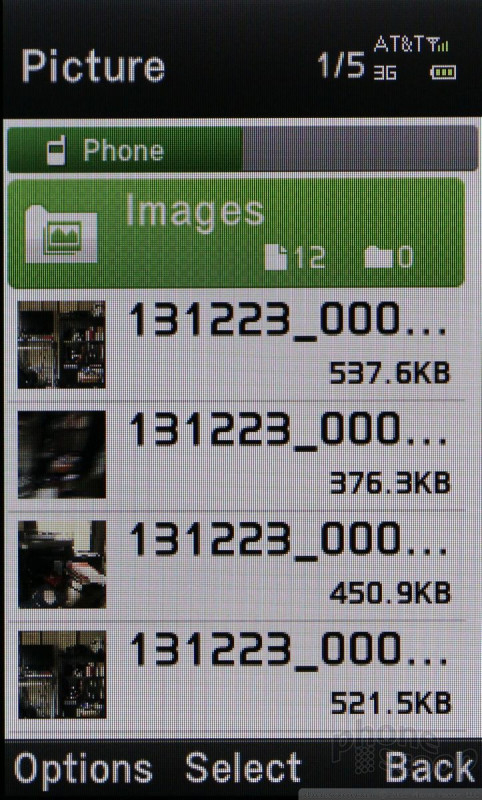





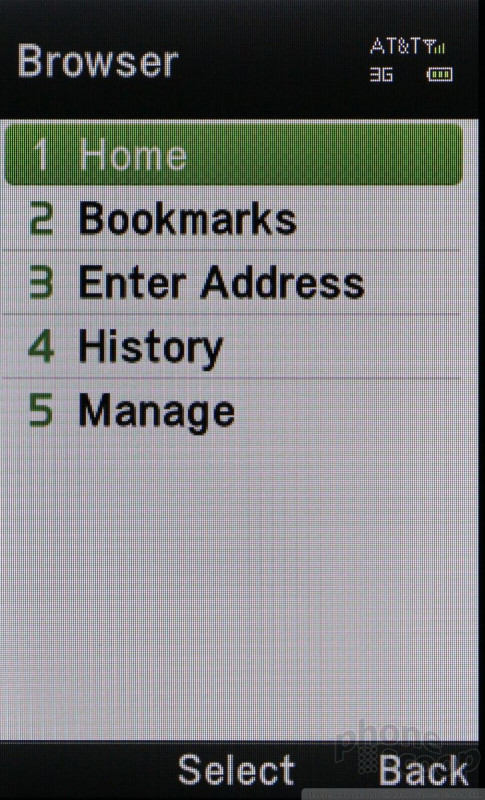




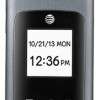 Pantech Breeze IV Hits AT&T Stores for $40
Pantech Breeze IV Hits AT&T Stores for $40
 HMD Launches Barbie Phone in US
HMD Launches Barbie Phone in US
 Metro's Latest Entry-Level Phone is the TCL ION X
Metro's Latest Entry-Level Phone is the TCL ION X
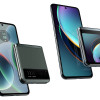 Motorola Gets Serious About Foldables with New RAZR Lineup
Motorola Gets Serious About Foldables with New RAZR Lineup
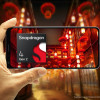 Qualcomm's New Chip for Entry-Level Phones Moves to 4nm
Qualcomm's New Chip for Entry-Level Phones Moves to 4nm
 Pantech Breeze IV
Pantech Breeze IV









